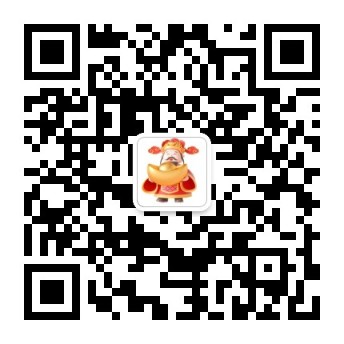@Component({
? selector: ‘my-app’,
? template: `
? ? <h1>Welcome to Angular World</h1>
? ? <p #greet>Hello {{ name }}</p>
? `,
})
export class AppComponent {
? name: string=’Semlinker’;
? @ViewChild(‘greet’)
? greetDiv: ElementRef;
? ngAfterViewInit() {
? ? console.log(this.greetDiv.nativeElement);
? }
}
但我发现用这种方法获取ngIf渲染的元素时得到的是undefined
<div cdkDropList #dropList [cdkDropListConnectedTo]=”_connectableDropLists” (cdkDropListDropped)=”drop($event)”>
<div *ngFor=”let item of itemDatas” (click)=”onItemClick($event,item)” cdkDrag
(cdkDragStarted)=”startDragging($event)” [cdkDragData]=”{ item }”>
</div>
</div>
</div>
ngAfterViewInit(): void {
? ? if (this.dropList) {
? ? ? console.log(this.dropList)
? ? }
? }
通过这个也是实现了一个buttonGroup拖拽button到 列表的功能,列表的button也能拖拽到 buttonGroup
用的也是Angular自带的 cdk/drag-drop
官网的文档和demo比较简单,没有讲到跨组件的实现,简单记录一下自己实现的思路。
将需要拖拽的元素加入cdkDropList,并且在A组件和B组件都初始化的时候获取到需要拖拽的dom元素,将他们各自注册到store中,带上特殊的componentId。
A、B组件加上cdkDropListConnectedTo 这决定着组件可以跨组件拖动到哪里,用_connectableDropLists变量。同样的,在页面初始化时,通过rxjs的流订阅特殊的componentId,去获取到当有拖拽list注册到store中时的变化,并且赋值给_connectableDropLists数组。
this.dragDropService.getDragListsAsync(this.pageId, parentId.value)
? ? ? .pipe(takeUntil(this.destroy))
? ? ? .subscribe(dropLists=> {
? ? ? ? this._connectableDropLists=dropLists || [];
? ? ? });
this.storeService.getPropertyAsync(this.pageId, this.componentId, ‘children’)
? ? ? .pipe(takeUntil(this.destroy)).subscribe(result=> {
? ? ? ? if (!result || result.length===0) {
? ? ? ? ? this._children=[];
? ? ? ? ? this._dragData=[];
? ? ? ? ? this.changeRef.markForCheck();
? ? ? ? } else {
? ? ? ? ? const dropbuttonArray=result.filter((item)=> {
? ? ? ? ? ? const itemType=this.storeService.getProperty(this.pageId, item, ‘componentType’);
? ? ? ? ? ? if (itemType===AdmComponentType.DropdownButton) return item;
? ? ? ? ? });
? ? ? ? ? if (dropbuttonArray.length > 0) {
? ? ? ? ? ? this._connectableDropLists=[];
? ? ? ? ? ? dropbuttonArray.forEach(comId=> {
? ? ? ? ? ? ? this.dragDropService.getDragListsAsync(this.pageId, comId)
? ? ? ? ? ? ? ? .pipe(takeUntil(this.destroy))
? ? ? ? ? ? ? ? .subscribe(dropLists=> {
? ? ? ? ? ? ? ? ? this._connectableDropLists.push(…dropLists);
? ? ? ? ? ? ? ? });
? ? ? ? ? ? });
? ? ? ? ? }
? ? ? ? }
? ? ? });
因为A组件是B组件的父级,所以需要通过当前组件id获取到父级id,再获取到拖拽元素
通过(cdkDropListDropped)=”drop($event)”,注册拖拽结束的回调事件
drop回调事件处理拖拽结束后的数据处理,这里涉及到项目低代码的一些组件数据处理,大致是删除oldParent children, 然后新的parent节点加上,再更改当前组件的parent节点。同时这里涉及到buttongroup下面的button本身也可以互相拖拽的处理,所以也需要一层判断来特殊处理。
? ? if (event.previousContainer !=event.container) {
? ? ? const { eventData }=event.item.data;
? ? ? const componentId=eventData[event.previousIndex];
? ? ? const oldParentId=this.storeService.getProperty(this.pageId, componentId, ‘parentId’, false)?.value;
? ? ? // delete oldParent children
? ? ? const oldParent=this.storeService.getProperties(this.pageId, oldParentId);
? ? ? const index=oldParent.children.indexOf(componentId);
? ? ? oldParent.children.splice(index, 1);
? ? ? // add newParent children
? ? ? const oldChildren=this.itemDatas.map(x=> x.id.value);
? ? ? oldChildren.splice(event.currentIndex, 0, componentId);
? ? ? this.storeService.setProperty(this.pageId, componentId, ‘parentId’, { value: this.componentId }, [[this.pageId, componentId]]);
? ? ? this.storeService.setProperty(this.pageId, oldParentId, ‘children’, oldParent.children, [[this.pageId, oldParentId]]);
? ? ? this.storeService.setProperty(this.pageId, this.componentId, ‘children’, oldChildren);
? ? ? this.changeDetector.markForCheck();
? ? ? return;
? ? }
? ? moveItemInArray(this.itemDatas, event.previousIndex, event.currentIndex);
? ? const children=this.itemDatas.map(x=> x.id.value);
? ? this.storeService.setProperty(this.pageId, this.componentId, ‘children’, children);
? }
这样子组件和父组件的内部元素互相拖拽,也就能实现了
以上就是Angular获取ngIf渲染的Dom元素示例的详细内容,更多关于Angular获取ngIf渲染的资料请关注脚本之家其它相关文章!
